Review: Kin Two
May 22, 2010, 12:14 AM by Philip Berne
Microsoft's new Kin Two on Verizon Wireless is a social networking magnet with a style all its own. Did Microsoft sacrifice too many features to bring this youthful smartphone to the masses? Find out in our full review.
Form
Is It Your Type?
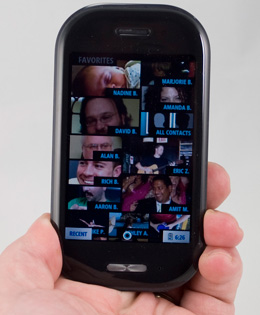
The Kin Two is clearly meant for the Sidekick crowd, and I'm not just saying that because Danger, the team behind the original Sidekick, is now part of Microsoft. The phone screams hipster in almost every way. The minimalist front face, the offset fonts on the keyboard, the magazine style interface, and even the unique, tubular packaging are all self-consciously cool. And like the cool kids in high school, the Kin Two can be attractive and fun, but it also lacks depth and substance.
Body
The Kin Two is a cheap feeling, black plastic brick. The phone is not very heavy, which doesn't help the impression of cheapness. The plastic creaks. The slide clacks open, and the screen up top wobbles a bit. The size and shape make the Kin Two easy to pocket, but the phone wasn't always smart enough to switch off the capacitive screen when it was sitting in my pants and often I would accidentally change tracks on my music or press some other software button when I slipped it into my slacks.
The Kin Two might be easy in the hand when making phone calls, but there were plenty of design decisions that made the phone harder to use. The case is mostly nondescript, with a glossy black front face with symmetrical bars breaking the surface on either side of the screen. Up top is the earpiece opening, and below the screen you'll find the Back button.
The phone is trapezoidal in shape, with a smaller back than front. This shape helps the phone fit nicely in the hand, but it also means that the side buttons are all located on an inward slope, which made pressing difficult. The volume keys on the upper right side were okay, but the power button / screen lock on the top right corner was very difficult to find. Worst of all, it is tough to press hard on the two-stage camera button without pushing the screen up a bit.
The Three S's
Screen
The display on the Kin Two is a 3.4-inch, HVGA touchscreen. Though it could have been a bit larger, it seemed to fit nicely on the phone's face, in good proportion to the rest of the phone's front. The screen looked pretty good, though a higher resolution would have helped, since the interface relies so heavily on photos and small text boxes. As it stood, text looked a bit jagged in the phone's interface, and the ubiquitous Facebook and MySpace photos - already poor photography - were not much helped by the display. Outdoors, the screen could have been easier to read. Some of this problem is the fault of the screen technology, and some is the fault of the interface, which uses white or colored text on a black background, tiny icons and miniscule fonts. That's not a good combination for a sunny day.
Sound
The Kin Two sounded terrible. Calls were rife with static and moments where the sound cut out completely. During my test period I had to call Microsoft support to activate my copy of Windows 7, a task which required many, many spoken commands and long number strings. Thanks to the Kin Two, this might have been the most frustrating call of my life. Microsoft's phone system couldn't understand even my most basic commands ("continue," "repeat"), let alone the multi-digit activation codes. On my end, as the system read back numbers for me to enter, I lost numerous digits when the sound cut out or static overpowered the speaker. Under the strongest signal things sounded a bit better, but the Kin Two never approached a sound quality I would call good.
The speakerphone suffered the same problems. The speaker managed adequate volume for my closed office space, but was mostly useless in my car with the engine noise and wind outside blowing past. The ringtone selection was lousy, a mostly uninspired mix of frenetic jingles, but at least these rang out loud and clear.
Signal
Microsoft hides the signal indicator on the Kin Two, so you have to tap the clock in the lower right corner to get the details that would normally be in a notification bar up top on any other phone. The company says that it hides the signal bars because the intended audience doesn't care about signal strength, only whether the phone is connected or not. I wonder if Microsoft is trying to hide the lousy reception I saw on the Kin Two. Where other Verizon Wireless phones got within a bar of full strength, the Kin Two regularly reported two to three bars of signal, and this caused problems during calls, as I said.
The Kin Two was never able to connect to my Wi-Fi network. No matter how many times I tried, the phone always reported an incorrect password. This kept me from being able to synchronize my Zune library wirelessly. but otherwise the Verizon Wireless EV-DO network could fill in as a slower substitute for Web browsing and all my data needs.
Battery
Battery life on the Kin Two varies greatly depending on how you use the phone. In a straight talking test, I got just over 5.5 hours of talk time out of the phone. On my first day using the phone, however, I tried maxing out its potential, taking tons of pictures and video at smaller and HD resolutions, listening to music and browsing the Web over Verizon's data network. I started my busy day just after breakfast, and by lunch time the phone was completely dead. On the other hand, with more casual use making calls and listening to music, avoiding photos, which automatically upload to the online Kin studio, and most data usage, I got a couple days use out of the phone before it lost all steam. Clearly those always-active sync services take a toll on the Kin. That's too bad, because Microsoft is obviously pushing this phone for gathering and sharing, not calling and listening.
Touch
The entire Kin Two operating system feels a bit sluggish and laggy, and the touch sensitive screen was no exception. It worked fairly well, certainly better than the cheap, resistive touchscreens you'll find on the numerous feature phones on the market. But scrolling seemed to lag behind my finger with a short but noticeable delay. From the main home screen, the kin loop, I would flick my finger left to right and sometimes nothing would happen. It would take a few flicks to get to the menu on the left or the contacts on the right. When a message bubble popped up hovering over the Kin Loop screen, it was often difficult to accurately tap the tiny "X" mark that made it disappear, and I would hit the button option beneath, instead. In the Zune music player, the phone moved considerably faster, and scrolling was lightning quick. Throughout the rest of the phone, I didn't see touch performance to match.
Basics
Menus
The Kin interface is designed to look more like an organic, ever-changing magazine layout than a classic icon-grid phone design. It would work well, too, if it weren't so hideous. In constructing the interface, Microsoft tried to avoid all "chrome." That is, the polished edges, shadows and 3D features that makes a digital interface look physical. Instead, what you get looks more like a DOS program from the early nineties.
It's not all barren. The menu screen, to the left of the Kin Loop, has some stylish, large buttons to tap for messages, phone calls, email, the Web browser and the remainder of the short feature list on this phone. These buttons are red, white and black, unless you chose green (or blue, or pink). The deeper you dig, the more ugly things get. Every feature is ugly. It's all hard right angles; thick, chunky accent lines; muted, dark colors. If the Sidekick is rockabilly, the Kin Two is Soviet.
Instead of a home button, the Kin Two offers a Back button, a very silly idea that requires numerous clicks to jump from one app to another. This wouldn't be so bad if the Kin Two interface wasn't frustratingly slow. Every click gets a delay. Better if the Back button opened the main menu directly, as it does on better touchscreen phones. You can hold down the back button to jump directly to the Kin Loop, but I didn't figure this out until I had spent nearly two weeks with the phone. Instead of hiding this shortcut, it would have been nice to get a simple tutorial at the onset.
Instead of centering around a main application menu, the Kin puts the Kin Loop front and center. The Loop is basically a friend feed with status updates from Facebook, MySpace and Twitter all jumbled together. This is a horrible idea; the Loop looks a mess. Text crowds together and covers your friends' avatars. Sometimes, those avatars don't even show up. Perhaps the Kin Loop presents a good surface view of the current moment, but if you really want to keep up with your friends, you'll be digging into the longer RSS feeds frequently.
The second key feature for the Kin interface is the Spot. In theory, the Spot seems like it could be useful. It's a small dot at the bottom of the screen, and when you want to share something with other people, you drag things into the spot. Drag pictures, drag status updates, then drag contacts from your contact list, and the Spot puts it all together and sends things to the right place. Unfortunately, the Spot is a letdown. You can't forward email this way. You can't share music, even non-DRM tracks. You can't share appointments from the calendar, because there is no calendar on the Kin Two. Let that sink in for a moment. If I were taking dozens of pictures a day and lots of low resolution videos, I might find the Spot more useful, but I had to force myself to use it at all.
One last complaint: the screen lock is completely unreliable. Sometimes the screen lights up after a single press of the unlock / power button. Sometimes it took two presses. Often, I had to hold the unlock button down until the phone was ready to shut down, then clear the message asking if I wanted to turn off the phone, then swipe away the unlock screen. Of all the issues I found on this phone, the unlock problems were easily in my top three most annoying.
Calls / Contacts
Making calls with the Kin Two should be much easier than it is. The phone button is hidden beneath the slide, on the lower left corner of the keyboard. I'd rather not have to open the QWERTY every time I need to make a quick call. There's an onscreen button to jump to the phone function, but it's not even an option on the phone's main screen, the Kin Loop, as it's called. You have to pan left to find the Phone option buried way up top, as if it's no more important than the Settings or Alarm menus. With its mostly black, wireframe buttons, the dialer was difficult to see, even indoors. Once you dial a number, the Call button is the thinnest button on the screen, located beneath the number pad. It was easy to miss, both with my eyes and my fingers. Clearly, making phone calls is not a priority for this phone.
If you want to see your recent call log, you have to swipe the screen to the left. It's not an obvious maneuver, though the tiniest bit of the call log screen overhangs onto the dial pad screen, a common visual cue in the Kin interface.
Once you've connected a call, buttons appear onscreen to turn on the speaker phone, add a third party call, flash to another line or mute the current call. These buttons were just as short as the call button and each half as wide. Larger buttons would have been much easier to use.
The Kin Two can grab contacts from any of your social network, as well as your Windows Live account. Windows Live is a requirement to use the Kin Two, but the Windows Live site also walks you through synchronizing contacts from other services with Live. I was easily able to import my Gmail contacts into Live, and they synchronized to the Kin Two.
Though the Kin Two offers a complete contact list, the phone encourages you to keep your contacts handy on the extendable Favorites page to the right of the Kin Loop screen. You can add as many contacts as you like to this page, and they show up as a collection of photographs of various sizes. When you tap a photo, you can call or text that person, or open the full address book entry.
The address book contains phone numbers and email as well as recent status updates from your contact. You can see a little bit of the person's Facebook profile, but as with most social features, to get the full story you'll need to open the Web browser and navigate to the Facebook site.
Social Networking
The Kin Two supports the big three social networks: Facebook, MySpace and Twitter. The phone makes it easy to share status updates and read what your friends have posted on these three services. You can also share pictures and videos easily, even with geo-tagging for location information. The problem is, that's about all the Kin Two can do. This is the biggest problem I had with the phone.
Forget about apps in MySpace and Facebook, which no phone has managed yet. Even the basics are missing. You can't retweet a post in Twitter without opening the Web browser and navigating to the mobile Twitter page. You can't view a friend's photo album on Facebook without the browser. You can't integrate MySpace and Facebook events into your calendar AT ALL (because there is no calendar). In Facebook and MySpace, the Kin Two offers no access to incoming messages, and no way to send or receive friend requests.
You can't throw a stone without hitting a smartphone that packs all these features. So, the Kin Two is all about social networking and keeping in touch with friends, but it can't perform some of the more basic functions. Forget about listening to music on MySpace or playing Farmville or other online games on Facebook, you can't even dig into a friend's profile on this phone. If the Kin Two can't handle social networks any better than a good feature phone, or an average smartphone, why bother?
Messaging
Besides updating status messages on the triumvirate of social networks, the Kin Two also includes a few basic messaging features. There's an email app on board with presets for Windows Live Hotmail, Gmail, AOL and Yahoo!, as well as Microsoft Exchange servers, which might be too corporate for the intended audience, but I'm not complaining. You can also enter your own settings for POP and IMAP mail accounts. Email is basic and ugly. The app can't display HTML messages, and there are very few advanced email features.
Text messaging works fine on this phone, as it should, considering SMS is probably the most popular way for the Kin Two's target crowd to communicate with each other. Messages come through in a threaded style, and they were easy to follow as a conversation. It's also very easy to send MMS messages, attaching pictures and video through the Spot or directly through the messaging app itself.
There's a sort of unified inbox on the Kin Two, and it's probably the dumbest inbox I've ever seen. While I love the unified inbox on modern BlackBerry phones, where email, text messages, instant messages and even Facebook messages all live happily together, the messaging inbox on the Kin Two displays only text messages and your calling history. Yup, every time you place a call, you get a new message in your inbox telling you that you made a call. Ditto when someone calls you. It's completely useless, it obscures new text messages and there's no way to turn it off.
There is no IM client on the Kin Two. Microsoft says that the target crowd cares more about SMS than IM, but I think it's just silly not to offer a choice.
Extras
Music
Hidden inside the Kin Two is a Zune music player. When you open the Music and More option from the application menu, you effectively leave the Kin interface behind. That's a good thing. The Zune interface is solid and very attractive. I'm not a fan of the organization; it uses the same design technique where screens slightly overlap as a clue to the user that there are more options and different menus available. I found it counterintuitive, but it is consistent, so I imagine that, after spending some time with the player, I might get used to it.
The Zune player is very snappy, easily the most responsive app on the phone. Menus rush by quickly as you flick your finger, and the animated menus swing in and out of view smoothly. There aren't many playback options on board. There is a preset equalizer, but you can't create playlists on the Kin Two. Well, you can't create more than one playlist, though you can queue up songs for the Now Playing list.
Besides the digital music player, there is also a video player in the Zune app, and an FM radio. There's a podcast player, and you can download podcasts through the Zune application.
Mac users don't get access to the Zune subscription service. Instead, Microsoft employs an app from Mark / Space to copy non-DRM music from your iTunes library to the Kin Two.
Camera / Gallery
Camera

The eight megapixel camera on the Kin Two puts it at the top of its class for cameraphone sensors, so it was especially disappointing that the camera interface and features seem to have been an afterthought on this phone. That is to say, there are no real camera features. There's no touch focus, no smile detection, no panorama mode. These are features you'll find on many other high end feature phones, but the closest the Kin Two comes is a fairly useless burst mode that would only take a couple consecutive pictures for me before it quit trying. There is a rudimentary white balance to account for cloudy days or indoor, office lighting. You can choose faster, cell tower based geotagging or real GPS geotags. Even for resolution controls, the Kin Two lacks details, offering only small, medium and large, with no idea of how many pixels you'll shed as you step down.
The camera opened after a few seconds of waiting. It took about four or five seconds between pictures to get ready for the next shot. That's fairly slow, but no real surprise here. The LED flash was nice and bright, and I took some sample shots in a completely dark room, where the Kin Two was able to light me up for a self portrait.
The camcorder gets even fewer options. You can switch from high-definition, 720p video to a smaller VGA format. The Kin Two will not email or upload 720p videos to the Kin Studio, but VGA clips will upload automatically and can be sent wherever you like. Otherwise, the camcorder has a night mode, and you can also set geotagging options for videos, just like with still photos.
Gallery
The Kin Two has an innovative concept for handling the photo gallery, and I wish it lived up to its potential. As you take pictures and lower resolution videos, the Kin Two automatically uploads them to the Kin Studio, a Web site that is part of kin.com. As you snap pics, make phone calls and receive messages, the Kin Two tracks all of these on the Kin Studio, and you end up with a very cool timeline of your life and experiences with the Kin Two. The Web site looks great. Ironically, it was almost as sluggish as the phone itself (perhaps Silverlight is the culprit all around?), especially when it came to downloading pictures and videos.
The Kin Two gallery gives you plenty of options for uploading and sharing pics, but not for editing. You can email pics, send images as an MMS message or upload pics to Facebook, MySpace or a Windows Live account. To get up close with your pictures, you can pinch and zoom to reveal fine details, but the pinch gesture did not work well in the gallery app, and the image would sometimes jump all over the screen as I tried to zoom in.
Scroll left to right and you'll find saved images, if you've uploaded your own pics to the Kin Two through the Kin Studio site. You'll also find a few of the most recent albums uploaded by your contacts to Facebook or MySpace. From all of my hundreds of contacts, I was only offered three galleries to choose from, with no option to browse for more, or pick out the albums from a specific user. This made the online gallery feature nearly worthless.
Image Quality
For an eight megapixel shooter, image quality on the Kin Two was not very good. It wasn't horrible, and under the best lighting conditions images were actually pretty good. But indoors or with complicated, mixed lighting, images fell apart quickly. Inside, my pictures displayed lots of noise and a dreary, grey tint that sapped bright colors. Details were fuzzy, and an oversharpening effect gave pictures a digital look, like a still frame from a TV image. Outside, things looked much better, with accurate colors and fairly good details, especially close up. The camera was unable to deal with a mix of darker shade and backlighting, and sometimes shadier images took on the grey cast of my indoor shots. Deep red colors were a serious problem, a common issue with cameraphone sensors, and you can see the red flowers in my samples lacked all detail besides their brilliant color.
Video quality was similar; it wasn't bad, but it didn't live up to its high resolution potential. The high definition videos I shot with the Kin Two showed lots of blocky compression artifacts in my images and too much noise all around. Motion was not fluid in these video. For the camera holder, the microphone recorded sound surprisingly well without suffering too much from ambient noise. But for other subjects, voices were distant and hardly audible.
Check out the high-definition video sample below taken in 720p resolution with the Kin Two's camcorder
Browse / Customize
Browser
The browser on the Kin Two is sluggish and underpowered. Since the Kin wouldn't recognize my Wi-Fi network, I tested it using Verizon's data network, and it simply crawled along. Most pages took much longer to open on this device than on other feature phones I have on hand, which is unfortunate because all that waiting only earns you a simplified, mobile version of most pages, anyway. Even Google took almost 30 seconds to open. That's embarrassing. CNN, the New York Times and even Google Reader all defaulted to their most basic format, the same as you'd see on any simple feature phone. Considering this phone has a "Windows Phone" badge emblazoned on the back, I'm disappointed that it didn't get a proper Windows Phone browser.
Our own PhoneScoop homepage looked okay, though spacing and layout was a bit off. You can pinch to zoom in and out of a Web site, but the screen is so small that there isn't much room for pinching, especially when the phone is tilted into landscape mode. Zooming in was not very smooth, and the Kin browser took some time to redraw text and images in steps as I looked closer at a Web page.
Customize
There are numerous options to customize shortcuts and the layout of the interface, but nothing to change the overall look and feel beyond a limited color palette. You can add Web pages and RSS feeds to the main Kin Loop screen, including the status update feeds from MySpace, Twitter and Facebook. On the Favorites screen, you can add an endless stream of contacts, and each person shows up as a cropped version of their social network avatar. You can also customize the lock screen wallpaper.
For themes, there are four color palettes to choose from, and the selection is limited and uninspired. You can turn the menus green, pink, blue or red, but these color choices don't affect much in the interface design, mostly highlights and accents. The phone remains dark and dreary throughout many of the top levels, dull white and grey through the settings menus and deeper levels. You can also customize ringtones and various alerts, but you can't use tracks from the Zune player, not even DRM-free songs. You have to use the preset sounds, and some of these can be fairly grating.
Extras
GPS
Unlike just about every other feature phone in its class, the Kin Two lacks any mapping or navigation software. The phone has an aGPS sensor on board, but it uses location data for geotagging, not turn-by-turn directions. There is no map to help find local spots or points of interest. This was especially annoying when I was returning from the airport and I needed gas. I had no idea of my exact address, and the phone offered no help for my predicament.
Bluetooth
My Bluetooth headset paired just fine with the Kin Two, but even my high quality Plantronics earpiece couldn't help the poor audio quality on the Kin. I also paired the phone with a set of stereo Bluetooth speakers with no trouble, and music sounded good coming through the wireless system.
Clock
Though you don't get a calendar on the Kin Two, you do get an alarm clock, but you can't set it more than 24 hours ahead, so it doesn't make up the difference. If you're just checking the time, the Kin Two has a large clock on the lock screen, but as I said, the lock button was unreliable, and so the Kin made a frustrating timepiece as I had to keep jamming the button to light up the display. Within the phone's interface, the clock is hidden. There's a general status indicator that remains in the lower right corner of the phone, and if you tap the small box you get the time and date, battery level and wireless signal strength indicators.
Video Tour
Wrap-Up
There are omissions on the Kin Two I can excuse. No calendar, no instant messaging, no navigation; I can live without if the target audience really doesn't use these features, as Microsoft's extensive focus research has shown. But the lack of these features is hardly the biggest problem I have with the Kin Two. At every level the phone is an utter disappointment. I can't think of a single feature this phone gets completely right, let alone a spot where it excels. Perhaps the Zune player is a standout, but after months of clamoring for a "Zune phone," I'm inclined to recommend giving up the dream and simply buying a Zune, if you're into subscription music.
Where the phone should excel, it falls flat on its face. Social networking is a bust. It's either a messy, confused jumble on the front page, the Kin Loop, or it's underwhelming and lacking features throughout the device. You can't reply to Tweets without opening the sluggish Web browser. You can't view your friends' photo albums on Facebook without doing the same. There isn't a smartphone around on which I'd accept these shortcomings, and since Verizon Wireless insists on charging smartphone prices for the device and for the required data plan, the differences between the Kin Two and a real, competent smartphone are even more glaring.
But worst of all, the Kin Two can't even nail the basics. Making calls is difficult, and calls sound terrible. Reception and battery life are a mixed bag, mostly full of coal. The Web browser and the email and messaging apps are sub-par, on the level of a basic feature phone and nowhere near smartphone quality. The interface, which is supposed to be adaptable, stylish and clean, is none of these. It's a dreary mess, and instead of a hip, modern look, the Kin Two feels archaic and lacking in substance.
I'll make this simple. Buy something else. Buy a Palm Pixi Plus, or even a BlackBerry Curve if you're willing to pay for a smartphone data plan. Buy an LG enV Touch if you want to avoid the expensive addition. Looking through Verizon Wireless' lineup, as long as you avoid the older Windows Mobile phones, there's hardly a smartphone I wouldn't recommend over the Kin Two. It's not a good phone, it's not even a good start for this burgeoning platform.
Comments
Private Video
On a side note, things are not looking good for the Windows Mobile line and I'm not expecting Windows Phone 7 (or whatever they're calling it this week) to be any better.
I recently switched from an Touch Pro 2 (Windows Mobile 6.5) to an HTC Driod Incredible (Android 2.1) and I couldn't be happier. I have no plans to look back either.
But I don't think Win 7 Mobile will be anything like it, and I do think the software will be on much higher end spec phones.
Not that bad...
Then stating "If you want to post a tweet you have to go to the Twitter web page" Bull freaking crap. On the main screen you click where your name is and the txt box appears and has Twitter, Facebook and MySpace listed. You can post to all three at once or pick which one you want to send it too.
I did miss the button on purpose in the video as a way of visually demonstrating my point. But I still think it's too small, and my hands aren't huge. However, that may not be a problem for everyone.
...
(continues)
Microsoft's Extensive Focus Research?
No instant messaging?
Their "extensive focus research" doesn't appear to have been that extensive.


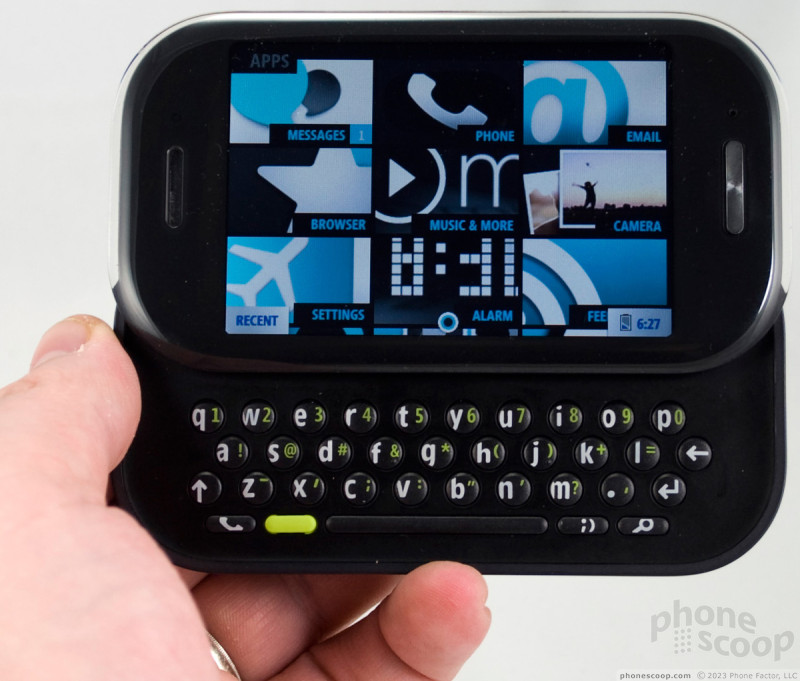









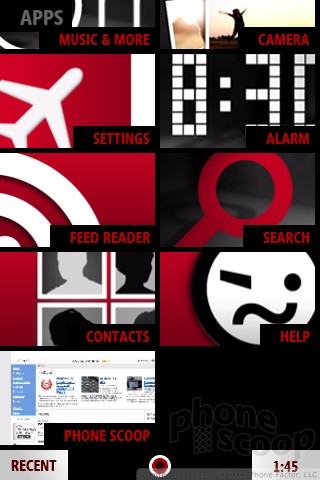



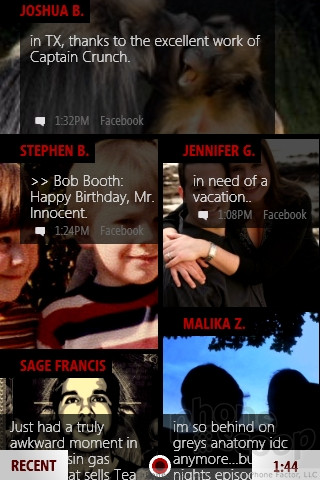








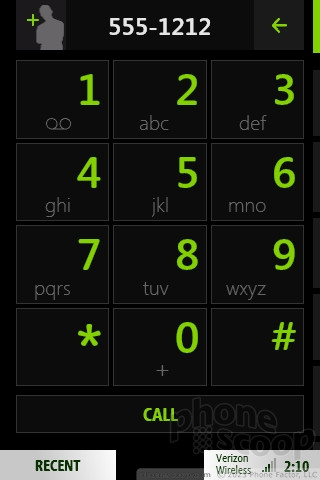








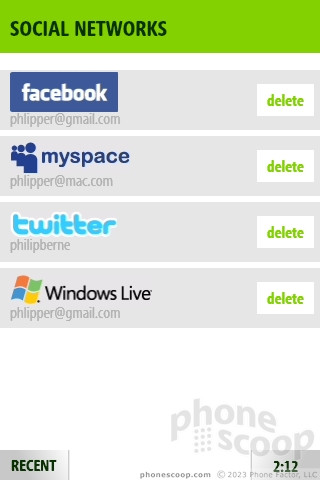









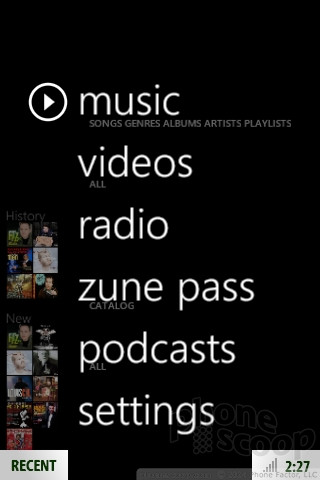





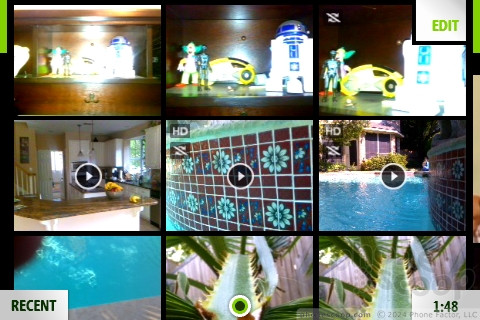



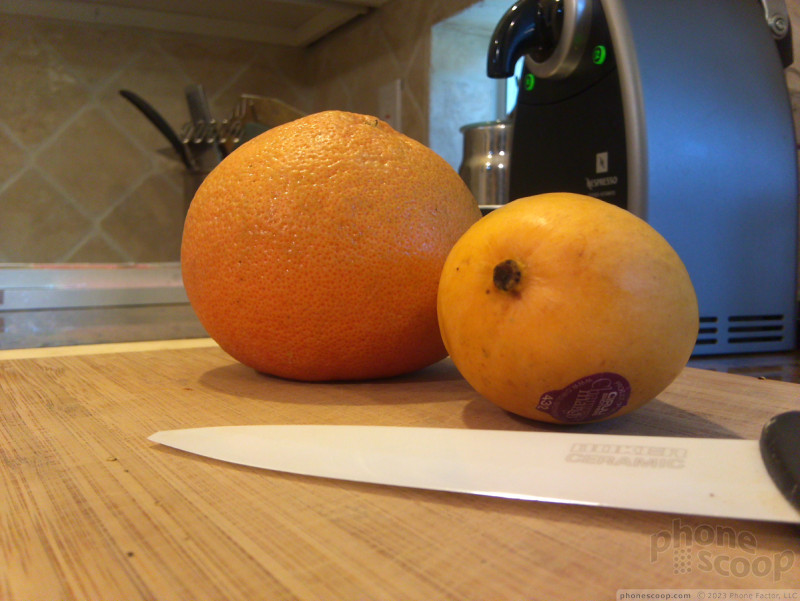










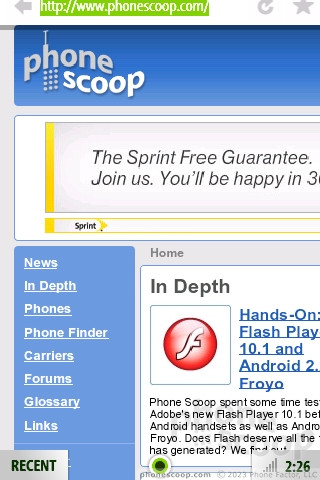










 Review: Microsoft Kin One and Two
Review: Microsoft Kin One and Two
 Samsung Upgrades its Wearables
Samsung Upgrades its Wearables
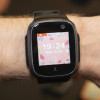 Hands On with Xplora Kids Smartwatches
Hands On with Xplora Kids Smartwatches
 Hands On with Teams-Certified Bluetooth Earbuds
Hands On with Teams-Certified Bluetooth Earbuds
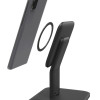 Mophie's New Chargers Bring Magnetic Mounting To All Qi Phones
Mophie's New Chargers Bring Magnetic Mounting To All Qi Phones
 Sharp Kin Two
Sharp Kin Two


